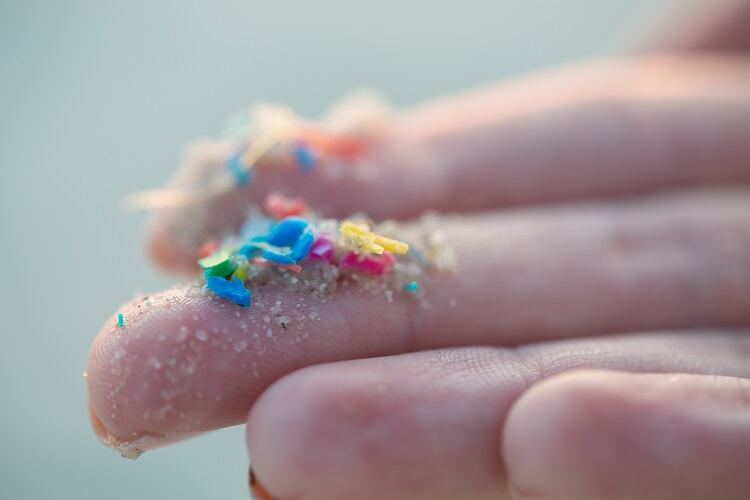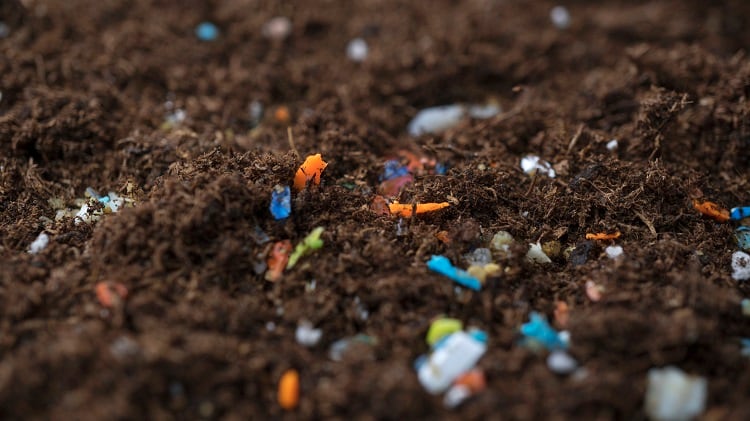The study found that vast quantities of nanoplastics – around 240,000 in a litre – could be found in bottled water. This was between 10 and 100 times greater than they had previously estimated.
A more dangerous prospect
Microplastics form when plastics break down into smaller and smaller bits. But it doesn’t always stop there. Most plastics do not break down into other substances when they get smaller but simply divide, with almost no theoretical limit to how small they can become. Nanoplastics are the result of microplastics breaking down even more.
While microplastics are suspected of being harmful to human health, nanoplastics pose dangers that microplastics don’t. Unlike microplastics, nanoplastics are so small that they can pass through lungs or intestines into the human bloodstream, and from there travel to the heart or brain. They can even make it into our cells and cross the placenta (an organ which develops in the uterus during pregnancy) into unborn babies.
While research is still ongoing into what affects this may have, current studies, such as one published in the journal Frontiers last year, suggest that plastics are carriers of a range of endocrine disrupting chemicals (EDC) which can harm human health. Furthermore, the smaller the plastic particle, the larger the absorption capacity and relative surface area, meaning that nanoplastics pose a greater threat than microplastics.
Bottle water and microplastics
The present study is the latest in a growing body of research linking bottled water to microplastics. In 2022, the organisation Agir pour l’Environment (Acting for the Environment) in France found microplastic contamination in around 78% of best-selling bottled water brands in France. Furthermore, in 2018, the State University of New York found that there is twice as much microplastic in bottled water as tap water.
The thyroid gland is responsible for normal brain function, and thus disrupting it, as nanoplastics and microplastics have the potential to do, can affect almost every organ in the body.
Furthermore, some of the negative causes that microplastics and nanoplastics are thought to have are neurotoxicity (damage to the brain), reproductive toxicity (damage to fertility), cytotoxicity (toxicity to cells), and immunotoxicity (damage to immune systems). Microplastics have also been linked to the spreading of antimicrobial resistance when dumped in soil.
The nanoworld
Previous studies on microplastics stopped at the boundary of the nanoworld, only making bulk estimates of nano mass and unable to count the quantity of nanoparticles within. Now, researchers in this study used a technique called stimulated Raman scattering microscopy, which uses twin lasers to detect seven common kinds of plastic, provides a more accurate method of detection. Researchers in this study used the technique along with a data-driven algorithm to interpret the results.
Testing three well-known plastic bottle brands, the researchers found 110,000 to 370,000 particles in each litre. Ninety-percent of these were nanoplastics, with only 10% microplastic. One of the most common plastics such particles were made from was polyethylene terephthalate or PET, which is what bottles are often made from. PET was outnumbered by polyamide, a type of nylon which the researchers suggested likely comes from plastic filters used to purify water during the production process.
The seven known plastics only accounted for 10% of the particles found, with the other 90% unidentified by researchers. There is every possibility that they could also be nanoplastics, and if they are, these nanoplastics could number at tens of millions per litre.
There could be many more nanoplastics out there. The researchers intend to do further research, for example on tap water rather than bottled water.
Source: Proceedings of the National Academy of Sciences
'Rapid single-particle chemical imaging of nanoplastics by SRS microscopy’
Published on: 8 January 2024
Doi: https://doi.org/10.1073/pnas.2300582121
Authors: N. Qian, X. Lang, and W. Min
Source: Frontiers
'A review of the endocrine disrupting effects of micro and nano plastic and their associated chemicals in mammals’
Published on: 16 January 2023
Doi: https://doi.org/10.3389/fendo.2022.1084236
Authors: S. Ullah, S. Ahmad, X. Guo, S. Ullah, S. Ullah, G. Nabi, K. Wanghe




